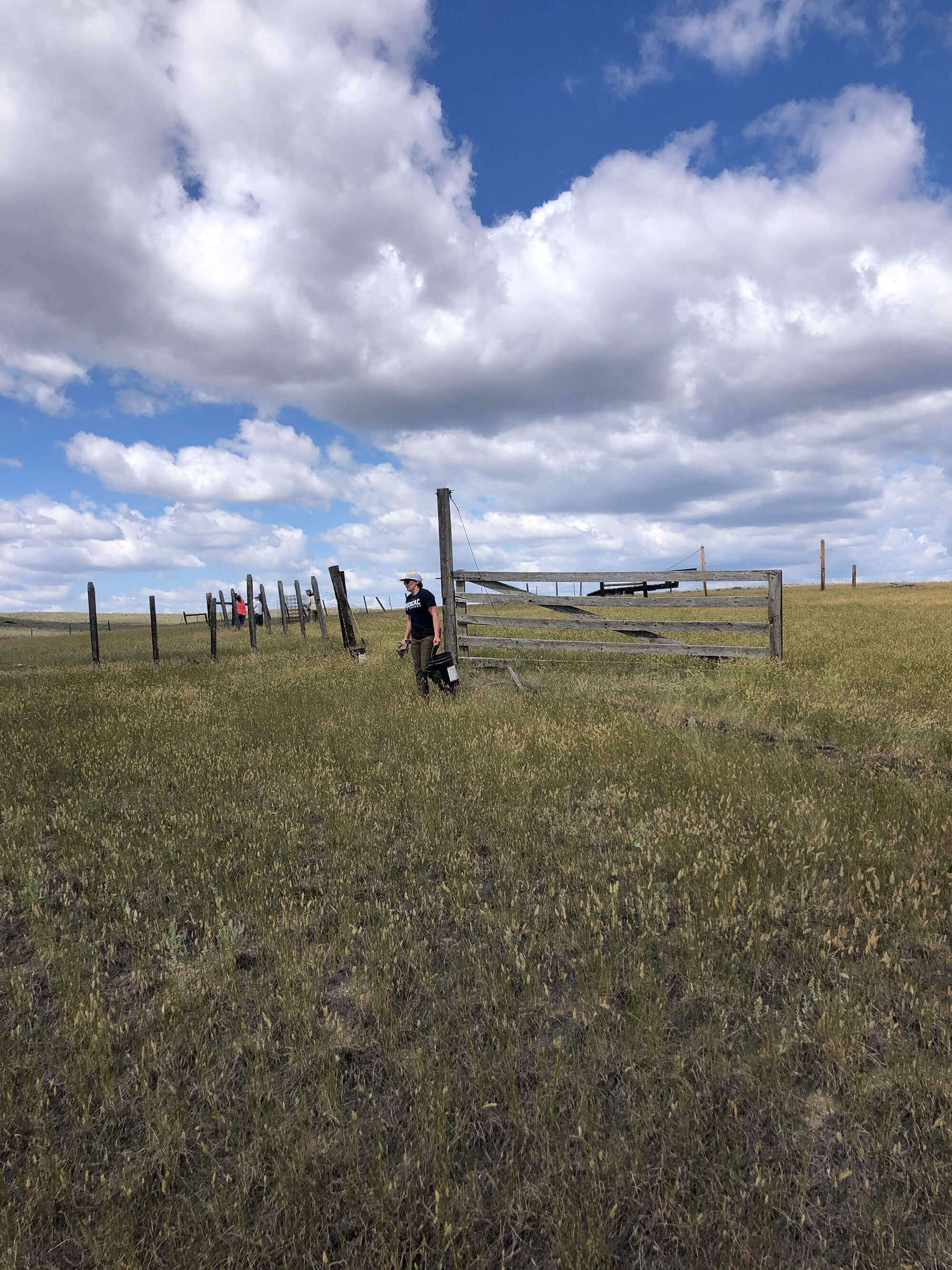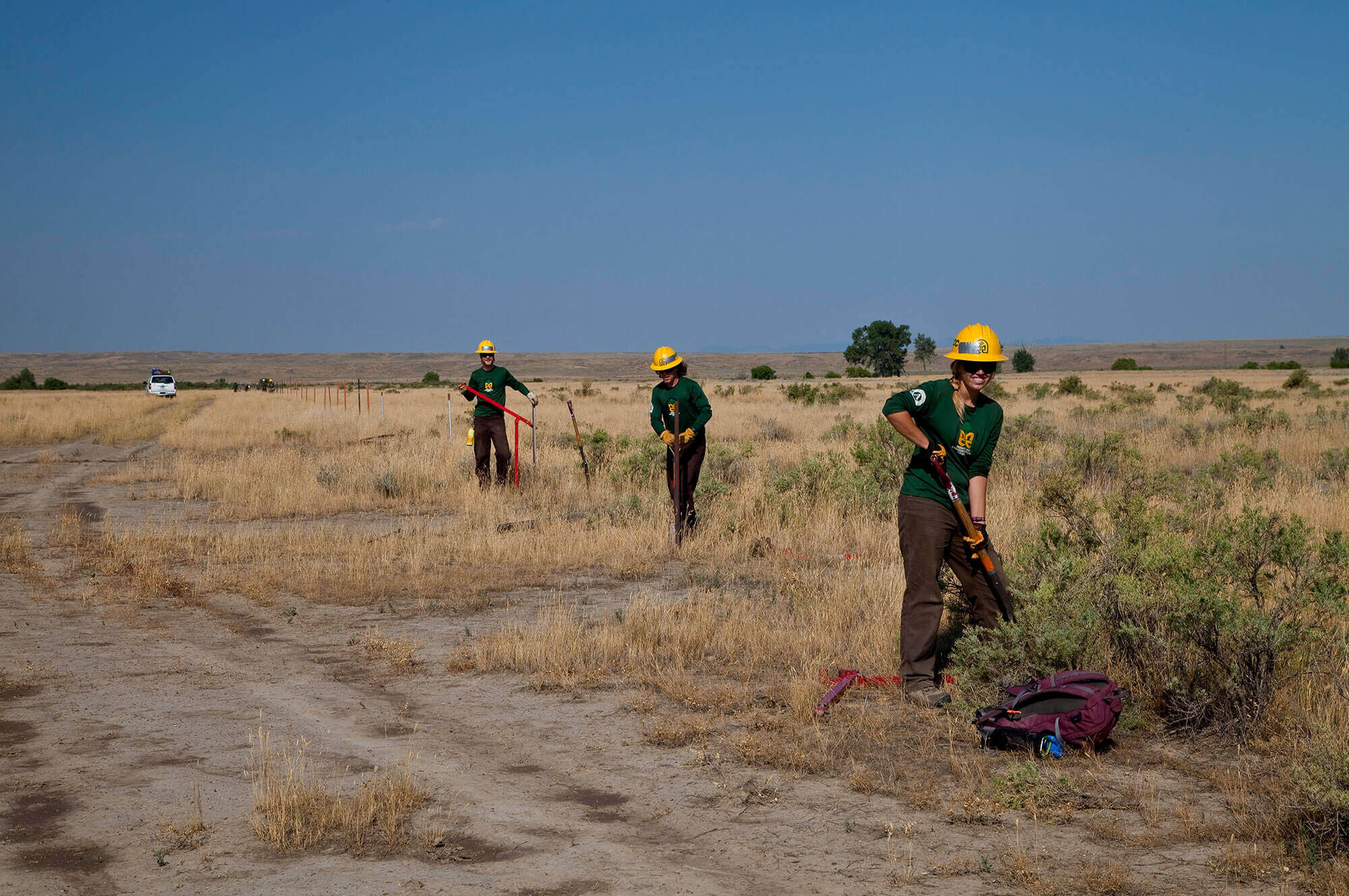Across all of our properties, volunteers, staff, and local contractors have removed more than 100 miles (and counting) of obsolete fence.
While fences may create barriers and hazards for wildlife, some are essential for good grazing management. Essential fences at American Prairie are used to keep bison and cattle in the right pastures.
There are many factors that influence the use, necessity, and placement of fences, including wildlife movement, property boundaries, public property uses, and grazing management. We have taken two different approaches regarding fences on American Prairie property:
- Remove fences that are a hinderance to wildlife and not necessary for management.
- Replace necessary fences with wildlife-friendly fencing.
Wildlife Friendly Fence Design
To date, we have replaced or converted more than 100 miles of fence to meet wildlife-friendly standards. The wildlife-friendly fence we use is inspired by the recommendation of Montana Fish, Wildlife & Parks, but is slightly modified to keep bison contained while also allowing wildlife to move as freely as possible across the landscape.
One of the design modifications is the addition of fence markers in high traffic bird areas. The American Prairie field team tracks bird-fence collisions and adds markers as needed in collision-prone areas. Research has shown that the markers reduce bird-fence collisions by 70 percent.
Another modification is the replacement of one barbed wire with an electric wire. That minor modification helps to deter bison from pushing on the fence to scratch an itch while they’re shedding their winter coats. Bison actually have very few reasons to escape through a fence, as long as their needs are met. Those needs are primarily food and water, places to feel safe, and the company of their herd.
The fences of each property are divided into zones and powered by solar panels. Each zone is 10-12 miles of fence powered by one 150-watt solar panel and a 12-joule charger, and a 12-volt battery that stores backup power used at night and on cloudy days.
Field staff spend 40 hours a week monitoring and maintaining all of these miles of fences around our property. All maintenance issues, wildlife collisions, and fence efficiency are documented by employees and are used to identify problem areas and areas of the fence that are causing problems for wildlife movement. That data is used to make continuously better management decisions and to improve wildlife movement in the region.




